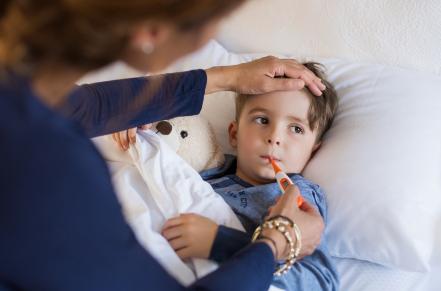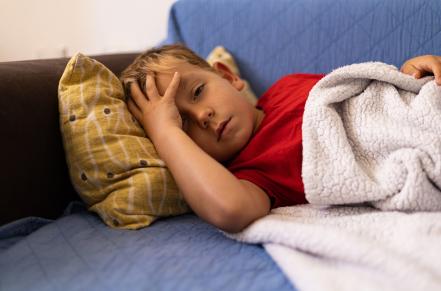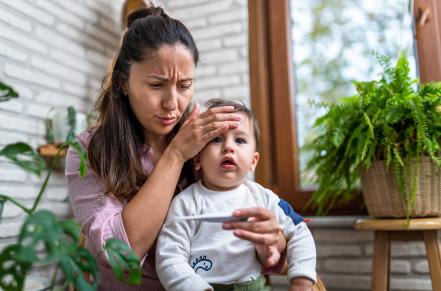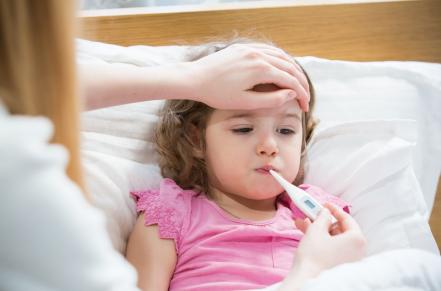What Are They?
A variety of infections, including strep throat, scarlet fever and impetigo are caused by Group A Streptococci bacteria.
What Are the Symptoms?
- Strep throat infections are characterized by a very red, painful throat often accompanied by fever, tender and swollen glands, headache and stomach ache. Sometimes a strep throat will be accompanied by coughing or a runny nose. Note, however, that the vast majority of sore throats in children and adults are caused by cold viruses, not strep bacteria.
- Scarlet fever is a type of streptococcal infection characterized by a skin rash. The rash usually consists of fine, red bumps that feel sandpapery and appear on the neck, chest, groin and/or inner surface of the knees, thighs and elbows. It may last only a few hours. Other scarlet fever symptoms include flushed cheeks, paleness around the mouth and a red tongue which resembles the surface of a strawberry. Scarlet fever is no more serious than strep throat.
- Rheumatic fever (abnormalities of the heart valves and swelling of the joints) can develop five to six weeks after the occurrence of any type of strep infection which goes untreated. In rare instances, kidney disease can also follow an untreated strep infection. Therefore, it is very important that all cases of strep infections be referred to health care providers for treatment.
Who Gets Them and How?
Strep throats occur most frequently in children above the age of three (and in adults) during the colder months and in crowded situations. If one person in a family gets strep throat, usually other family members also get it. The Group A Streptococci are transmitted from one person to another through direct contact with the respiratory discharges of infected persons. The symptoms will appear two to five days from the time of exposure. Strep throat is probably contagious before symptoms appear and continues to be infectious until treated for 24 hours.
When Should People with this Illness Be Excluded?
- Persons who have a positive strep culture should stay home.
- Persons who are only mildly ill can continue to attend the facility while awaiting the results of a strep culture, IF the doctor has not begun antibiotic treatment. If the culture proves to be positive, send the person home.
- Persons with strep may return to child care after they have had at least 24 hours of antibiotic medicine. The facility will have to make sure that every dose of the antibiotic needed during child care hours is taken for the next 10 days.
Where Should I Report It?
- Licensing requires that child care providers report to their local health department and to Licensing if there are two or more known or suspected cases of streptococcal infection in a child care program. However, the American Academy of Pediatrics strongly recommends that child care providers report even if there is only a single case, to ensure that the local Public Health Department is aware that this serious illness is present in a child care setting.
- Notify all parents/guardians and program staff if there is even one case. It is important that parents monitor their children for any symptoms. Keep the identity of any infected children confidential.
How Can I Limit the Spread?
- Make sure all children and adults use careful hand washing.
- Teach children to cough and sneeze into their elbow, wipe noses with clean tissues, throw the tissue into the wastebasket, and wash hands.
- Do not allow food to be shared.
- Do not kiss children on the mouth.
- Open windows indoors and maximize outdoor play.
- Parents who become aware that their child has strep throat or scarlet fever should inform caregivers within 24 hours.







